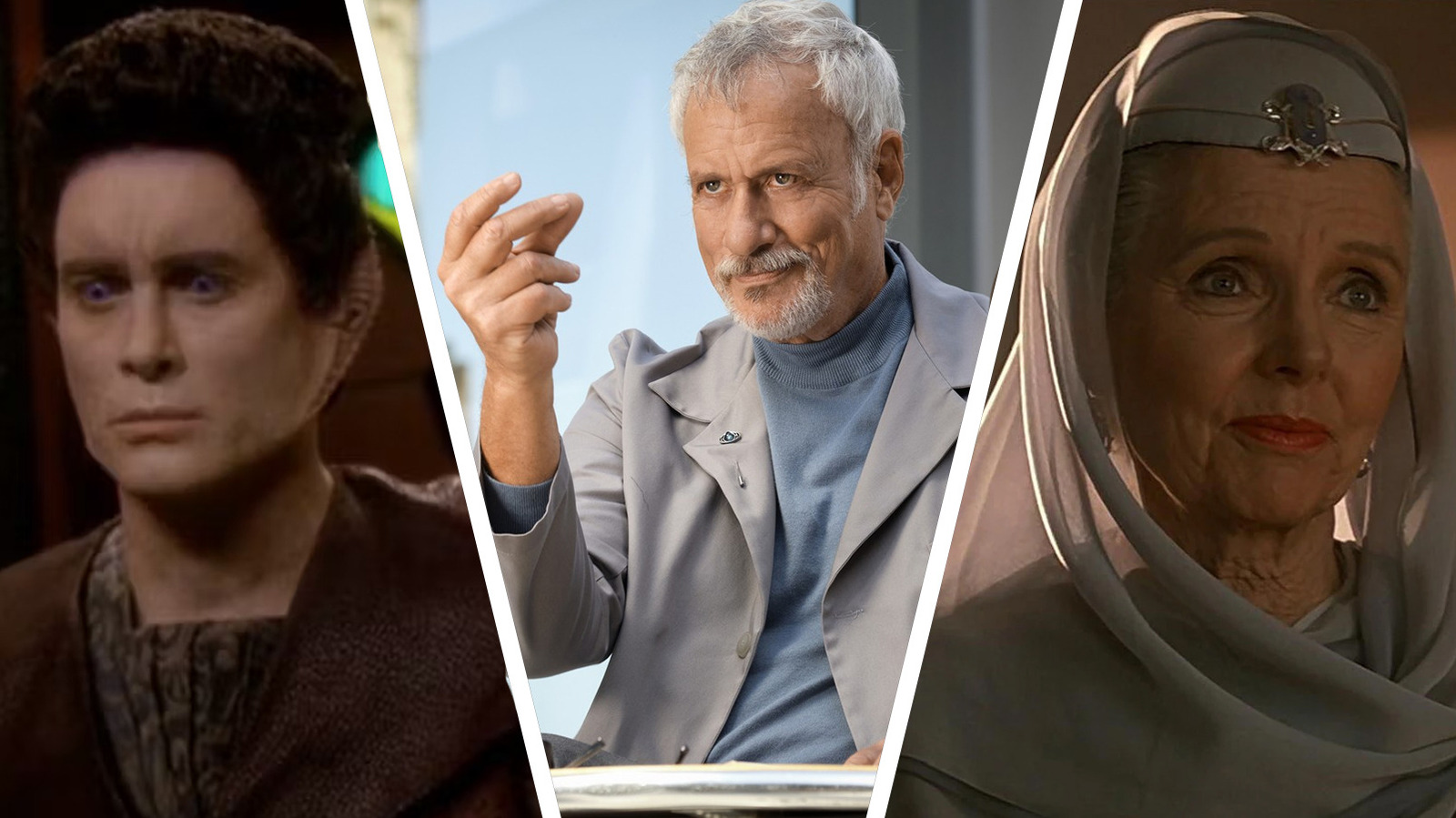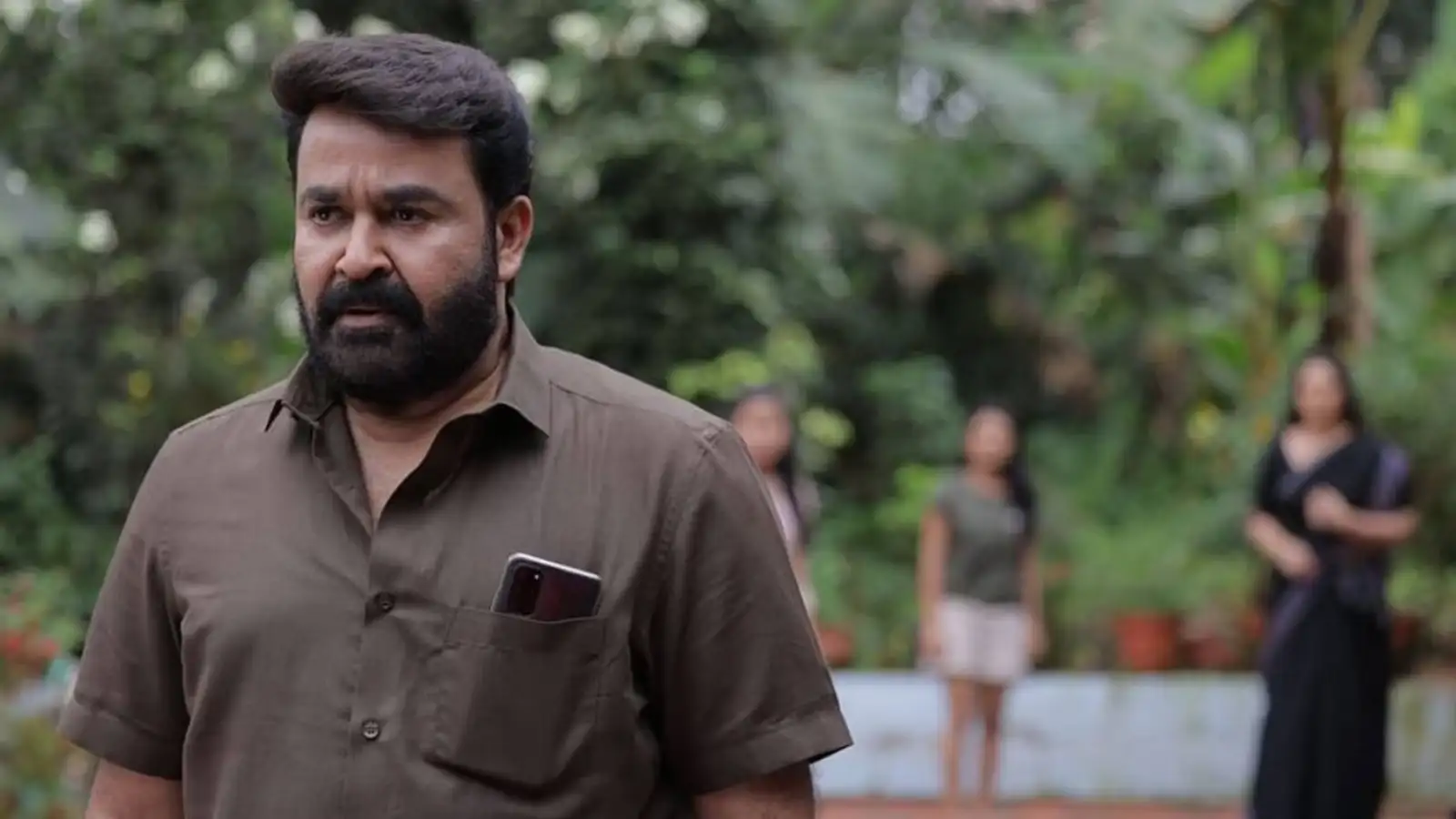Copyright /FILM

In its exploration of the unknown, the "Star Trek" franchise has never shied away from depicting the dangers of the cosmos. This is exemplified by plenty of characters perishing on-screen, including some of the saddest "Star Trek" deaths in the franchise on-screen. But there are also a number of key characters perishing off-screen, with several surprising entries given their presumed importance to the other characters and their shared narrative. Even off-screen, these deaths leave a lasting impression on the main characters and help drive the story forward. Not every death has to take place on-screen in order to be effective, and these off-screen instances certainly drive that point home. For some characters, the actors portraying them died or were in poor health, with the characters dying off-screen to preserve their dignity. To further clarify, in several cases, the bodies of these characters are seen on-screen, but their actual deaths are not. Here are 15 "Star Trek" characters who died off-screen throughout the entire science fiction franchise's history. George Samuel Kirk, also referred to as Sam, is the older brother of James Kirk, with both Sam and Jim played by William Shatner in "Star Trek: The Original Series." Sam's existence is first revealed in the same episode that he's killed: "Operation: Annihilate!" Visiting the Federation colony where Sam and his family lives, the Enterprise discovers the colony have either been driven violently insane or killed by an infestation of mind-controlling parasites. Sam is already dead by the time Kirk and the landing party investigate his home, discernible from his brother by his graying hair and a mustache in Shatner's wild cameo. Sam's death doesn't weigh heavily on Kirk after "Operation: Annihilate!," with the inclusion of him and his family as a forced way to make this particular mission feel personal. This aspect is accomplished more readily by Spock (Leonard Nimoy) getting infected than Sam and his family. The only real appeal is the morbidly funny dual role for Shatner in playing Kirk's deceased sibling. Sam Kirk is done better justice in "Star Trek: Strange New Worlds," where he's played by Dan Jeannotte, than he is by a silent and mustached Shatner. One of the best "Star Trek" villains of all time is Khan Noonien Singh, with the role originated by Ricardo Montalbán in the "Star Trek: The Original Series" episode "Space Speed." The episode also introduces Marla McGivers (Madlyn Rhue), a historian on the Enterprise who falls in love with Khan and assists in his attempt to take over the ship. After his initial defeat Khan is exiled to the remote planet of Alpha Ceti V, with McGivers agreeing to join him. When Khan resurfaces in 1982's "Star Trek II: The Wrath of Khan," his vengeance is fueled by the loss of McGivers to a parasite native to the planet. McGivers' death fuels Khan's motivation to obsessively hunt Kirk across the galaxy, no matter the cost to himself and his followers. Khan doesn't particularly elaborate on how his wife died, but her loss clearly informs his vendetta against the "TOS" characters. Given how terrifying Alpha Ceti V's parasitic creatures are when Khan uses them on his enemies, it can be inferred that McGivers didn't die peacefully. Montalbán was always an unfailingly magnetic adversary and Khan losing his wife only added to his natural intensity. Spock is notably a mixed race character, with his mother Amanda Grayson (Jane Wyatt) a human married to Vulcan ambassador Sarek (Mark Lenard). Both of Spock's parents debut on-screen in the second season "Original Series" episode "Journey to Babel," visiting the Enterprise as part of a diplomatic conference. Given the strained relationship between Spock and Sarek, Amanda often serves as the mediator between her husband and son. Wyatt reprised her role as Amanda in 1986's "Star Trek IV: The Voyage Home," helping Spock re-acclimate after his resurrection. When Sarek returns in the "Star Trek: The Next Generation" episode "Sarek," he reveals Amanda has since died. In her place, Sarek has remarried another human woman, Perrin (Joanna Miles), who accompanies him when he visits the Enterprise-D. As Sarek's failing mental health becomes apparent, one of his life's biggest regrets was never expressing the fullness of his love for Amanda. Later, Spock never speaks on his mother's death, more focused on his tasks at hand, when he makes his own appearance in the "TNG" era. Jack Crusher is a character who's dead before the start of "Star Trek: The Next Generation," but his impact and absence are acutely felt throughout the series. The husband of Beverly Crusher (Gates McFadden), Jack died shortly after the birth of their son Wesley (Wil Wheaton). At the time, Jack was a senior officer on the USS Stargazer, Picard's first command, with Picard still haunted by his death at the start of "TNG." Jack first appears on-screen in a holographic message recorded for Wesley in the fourth season episode "Family," with the character played by Doug Wert. Though Beverly, Wesley, and Picard seemingly move on from Jack's death as the series progresses, there are still recurring signs of lingering trauma. Through a telepathically forced flashback in the episode "Violations," Beverly is forced to relive seeing Jack's corpse after his accidental death during an away mission. Wesley encountered a vision of Jack in the episode "Journey's End," and Beverly would later name her and Picard's son Jack in her late husband's honor. The audience only gets the occasional glimpse of Jack Crusher himself, but it's very clear that he was someone of great importance to those he left behind. Just as Amanda Grayson was described as dying off-screen in "The Next Generation," so too was her husband Sarek in the series. When an older Sarek resurfaced in "TNG," it was revealed he was suffering from dementia impacting his duties as a Vulcan ambassador. By the fifth season two-parter "Unification," Sarek's health had deteriorated significantly, seen when he had one last conversation with Jean-Luc Picard (Patrick Stewart). While en route to Romulus for an undercover mission to locate Sarek's son Spock, Picard is informed that Sarek has died. In meeting Spock on Romulus, Picard and Data (Brent Spiner) convey the news that the Vulcan's father has passed away. Before leaving Spock to his mission of reuniting the Vulcan and Romulan societies, Picard allows him to mind-meld with him and gain insight on Sarek's mind left in his subconsciousness. Witnessing his father's repressed love and memories, Spock gently weeps as he grows to better understand Sarek through Picard. Though the "TNG" writers had plenty of regrets about Spock's return, this bittersweet moment is a highlight. The two-part series premiere of "Star Trek: Deep Space Nine" opens in the midst of Starfleet's hopeless battle against the Borg Collective, commanded by an assimilated Picard. Benjamin Sisko (Avery Brooks) is serving on the USS Saratoga during the disastrous skirmish, with his wife Jennifer (Felecia M. Bell) and their son Jake (Cirroc Lofton) also on board. As the Saratoga endures catastrophic damage from the Borg attack, all hands are ordered to evacuate from the starship before it is completely destroyed. Sisko retreats to his quarters and rescues Jake from the rubble, but a medical scan reveals that Jennifer, also buried in the debris, is already dead. "DS9" certainly starts things off with a bang, while giving Sisko a tragedy-fueled edge in comparison to other franchise protagonists. When Sisko and a restored Picard meet face-to-face three years after the battle, the pain and rage that the commander feels towards the former Borg is palatable. These themes of wartime loss and hard moral decisions became a defining element to "DS9" and Sisko, with the episode "Emissary" establishing that immediately. Though Sisko would eventually find love again, this absence hung heavily over him when he first arrived at DS9. The "Next Generation" cast made the leap to the big screen with 1994's "Star Trek Generations," which begins with a personal tragedy for Picard. The captain receives a message from Earth that his older brother Robert (Jeremy Kemp) and nephew René (David Tristan Birkin) died in a fire at the Picard family vineyard. The two characters were last seen alive and well in the fourth season episode "Family," with Jean-Luc and Robert repairing their long-estranged relationship. Initially keeping a brave face, Picard privately breaks down while speaking with Deanna Troi (Marina Sirtis), upset by the realization that his family line will end with himself. Picard's emotional breakdown at the start of "Generations" is one of the most vulnerable and raw scenes that Stewart ever performed as the character. Though the movie's underlying meditation on mortality and legacy are clumsily handled, it's this development that brings them into focus. The revival series "Star Trek: Picard" followed up on this arc, with Picard returning to Earth to run his family's vineyard after leaving Starfleet. Though Picard never overly dwelled on his brother's loss in this time, the circumstances why the vineyard needed him back were crystal clear. As "Star Trek: Deep Space Nine" progressed, it escalated its elements of moral ambiguity and political tension in the march towards the show-defining Dominion War storyline. This led to the formation of the Maquis, a coalition of Federation races operating against the Cardassian Union in defiance of Starfleet. Starfleet officially branded the Maquis as a terrorist group and tried to dismantle their efforts in "DS9" and "TNG" to maintain the fragile peace with the Cardassians. This was complicated when familiar faces were revealed to have sided with the Maquis, including Benjamin Sisko's old friend from Starfleet Academy, Calvin Hudson. Played by Bernie Casey, Hudson is introduced in the two-parter "The Maquis," trying to convince Sisko to help his cause. After the two part ways acrimoniously, Hudson renounces his Starfleet affiliation and leaves with his followers by force. Three seasons later, the Maquis make their last stand against the Dominion, an increasingly hostile military alliance including the Cardassians. As Sisko evacuates Maquis civilians from the enemy attacks, he learns that Hudson died in an off-screen battle against the Cardassians. To carry out the Dominion War, the Founders employ formidable armies of clones, overseen by a line of cloned supervisors from the Vorta race. The most prominent of these genetic strains was Weyoun, all played by Jeffrey Combs, numbered as new clone replacements became necessary. As the Federation and its allies stood at the brink of war with the Dominion, they met the fifth Weyoun clone in the episode "In the Cards." Weyoun 5 is a constant antagonistic presence once the war breaks out until the show's seventh and final season. Yes, anyone who's watched "Deep Space Nine" has seen their fair share of Vorta, including Weyouns, die on-screen. But despite his importance to the overarching Dominion War story, including the conflict's commencement, Weyoun 5 is disposed of unceremoniously off-screen. The seventh season episode "Treachery, Faith, and the Great River" introduces Weyoun 6, with his predecessor described as perishing in a suspicious transporter accident a month prior. Meant to foreshadow the Cardassian Union turning on the Dominion, this off-screen death felt like a rushed development. Among the core ensemble characters in the prequel series "Star Trek: Enterprise" is Enterprise NX-01 communications officer Hoshi Sato (Linda Park). Sato's tragic fate in the prime universe is actually revealed in an episode set entirely in the morally inverted Mirror Universe. "In a Mirror, Darkly Part 2," has the evil Jonathan Archer (Scott Bakula) find the lifeless USS Defiant from the prime universe sent back in time by a century. Marveling at the advanced technology in the displaced vessel, Archer peruses the Defiant's historical logs, not only learning about Starfleet but the life and career of his counterpart. The Defiant's logs also reveal what became of Sato in the prime universe, with her and family among those killed by Kodos the Executioner (Arnold Moss) in 2268. This would place Sato's age at around 117 at the time of her death, dying in a planetary tragedy that almost killed Kirk as well. Though it can be inferred that most of the "Enterprise" main characters had died by the time Archer boards the Defiant, Sato's death is the only one explicitly confirmed. This text description provides the fan-favorite Sato with an unexpectedly sad and vaguely unceremonious demise. Mainstay Leonard Nimoy passed the baton to the 2009 cinematic "Star Trek" reboot that completely reinvigorated the franchise, reprising his role as Spock from the canon's prime timeline. Nimoy also returned for the reboot's 2013 sequel "Star Trek Into Darkness," advising his Kelvin Timeline counterpart (Zachary Quinto) on how to deal with Khan Noonien Singh (Benedict Cumberbatch). However, during pre-production on 2016's "Star Trek Beyond," Nimoy passed away from complications with chronic obstruction pulmonary disease, ending an extraordinary life and career. "Star Trek Beyond" was dedicated to Nimoy, with the movie containing a reference to his version of Spock's final fate. While on shore leave from the Enterprise's five-year exploratory mission, the Kelvin Timeline Spock receives a message from New Vulcan. This Spock learns that the older prime timeline iteration of himself passed away from natural causes on the new Vulcan homeworld. The prime Spock bequeaths his personal belongings to Kelvin Spock, including a photo of himself with the classic Enterprise crew. This scene offers sentimental closure to the franchise's breakout character and a quiet tribute to Nimoy reflecting the real-world loss of an icon. When many familiar "Next Generation" characters resurfaced in "Star Trek: Picard," it was often under sadder circumstances than when audiences had last seen them. This is certainly true of Deanna Troi and Will Riker (Jonathan Frakes), who had settled down to raise a family. Reappearing in the first season episode "Nepenthe," it's revealed that the couple had lost their young son Thaddeus Troi-Riker to a neurological condition before the start of the series. To make matters worse, Thad's condition could've potentially been cured by a positronic matrix, but the Federation's strict ban on synthetic technology made this application impossible at the time. The first two seasons of "Picard" were "Star Trek" at its clumsiest and least subtle in its social commentary. That the first season belabored the point further by introducing the idea that Riker and Troi lost their firstborn child off-screen was even more heavy-handed in this regard. The third season drew some dramatic mileage off of this plot point, with Thad's death continuing to strain Riker and Troi's marriage and mental health. But to simultaneously introduce and kill off a child just to earn cheap sympathy and drive a story's themes felt in poor taste. At the start of "Star Trek: Picard," Jean-Luc has since retired from Starfleet acrimoniously at the rank of admiral and tends his family vineyard in France. One of the major factors behind Picard's retirement was Starfleet's refusal to assist Romulan refugees after their home world was consumed by a supernova. In a quiet sign of Picard's continued support for Romulans, he has since employed Romulans to work with him at his vineyard. This includes married couple Laris (Orla Brady) and Zhaban (Jamie McShane), who have become close friends with Picard as well. At the start of the second season, Zhaban is described as having been dead for a year and a half. No cause of death is provided by Picard or Laris as the two commiserate over his absence. Zhaban's death conveniently allows for a romance to blossom between Picard and Laris, though this too is short-lived. A character who never quite feels more than plot device, Zhaban is taken off the board between seasons to move Picard and Laris forward. One of the best James T. Kirk "Star Trek" episodes is "Obsession," from the second season of "The Original Series." The episode reveals that Kirk served under Captain Garrovick on the USS Farragut, still blaming himself for an incident that resulted in his captain's death. Years later, Captain Garrovick's son David (Stephen Brooks) served under Kirk as a junior officer on the Enterprise, helping him destroy the monster that claimed his father's life. The strange and tragic fate of David Garrovick was revealed in the 2021 animated series "Star Trek: Prodigy." The first season episode "All the World's a Stage" has the crew of the Protostar visit a planet whose native civilization reveres Starfleet. It's learned that this culture learned about the Federation from David Garrovick, who accidentally crashed a shuttlecraft on the planet over a century prior. Before dying, Garrovick regaled the native population about his experiences in Starfleet and the adventures that he had on the Enterprise. The reveal is an oddly melancholy coda for a "TOS" character, especially given his triumphant reconciliation with Kirk. Initially appearing as the first adversary for the "Next Generation" crew, the omnipotent Q (John De Lancie) became a recurring presence on the Enterprise-D. Though Q could purportedly obliterate humanity with a mere snap of his fingers, he became more of an annoyance and ersatz ally to the crew in later appearances. When Q reunited with Picard in the second season of "Star Trek: Picard," he brought back his original antagonistic edge. Picard deduces that Q is dying, with Q using his powers to offer a wayward parting gift to his greatest frenemy, in his own obtusely time-bending way. Though De Lancie was left unhappy with how Q's death was handled in "Picard," his final scene in the second season does offer a sentimental reconciliation with Picard. More puzzling is if Q actually dies when he expends the last of his energy to send Picard and his friends back to the restored timeline. It's never clear if Q perished in the same white flash of light that transported his friends across space and time or some time later. The nature of Q's death raises more questions than answers, especially as he's not seen dying on-screen.



